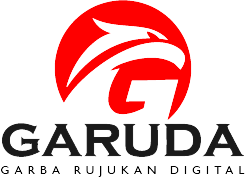PENGARUH KEPEMILIKAN INSTITUSIONAL DAN LEVERAGE TERHADAP PENGHINDARAN PAJAK PADA SEKTOR INDUSTRI DASAR DAN KIMIA YANG TERDAFTAR DI BURSA EFEK INDONESIA PERIODE 2017 – 2019
DOI:
https://doi.org/10.34127/jrakt.v5i1.378Abstract
This study aims to determine the effect of institutional ownership and leverage on tax avoidance in the basic and chemical industry sectors listed on the IDX for the period 2017 to 2019 partially for each variable. This type of research used in this research is a quantitative approach or statistical data analysis. This research is associative. This is done by connecting one variable to another in order to know, explain, and predict the level of dependence of the independent variable, namely institutional ownership and leverage on the dependent variable, namely tax avoidance. Sampling in this study was conducted using non-random sampling technique, namely purposive sampling. The number of companies from the basic industry and chemical sectors during the 2017 to 2019 period totaled 75 companies. Of the population in this study, only 12 met the criteria. The process and results of data analysis using Partial Least Squares using the WarpPLS5 7.0 program. First, the researcher tested the outer model with 3 (three) criteria, namely. convergent validity. Discriminant validity and reliability, and the results obtained from the convergent validity test of correlations for each variable show that all combined loading and cross-loading have values above 0.30. The discriminant validity test shows that the variable (X1) has an AVE root of 1,000; the correlation with other variables is 0.542. 0.286 and variable (X2) has AVE root of 1,000; the correlation with other variables is 0.687. and variable (Y) has the root AVE 1.000; has no correlation with other variables and variable Y fulfills the discriminant validity. The reliability test shows the value of the composite reliability coefficients for the Institutional Ownership variable (X1) of 1,000. Leverage variable (X2) of 1,000. Tax Avoidance variable (Y) of 1,000. This shows that all variables are reliable because they have met the composite reliability coefficients above 0.70. and from the results of the ineer modek test to determine the Goodness of Fit of the variable is the value of the Average Adjusted R-Squared (AARS) with the research result of 0.279. (P = 0.049) it can be said to be good because it fits the fit criteria. Hypothesis testing in the WarpPLS analysis uses the t test. Hypothesis testing is done by using the bootstrap resampling method. Institutional ownership has an effect on tax avoidance showing the path coefficient value of 0.38 and the P-value less than 0.04. it can be said that Institutional Ownership has a significant positive effect on tax avoidance and DER has an effect on Tax Avoidance showing the path coefficient value of 0.48 and the P-value is less than 0.01. it can be said that DER is positively significant towards tax avoidance.
Keywords: institutional ownership, leverage and tax avoidance
References
Albrecht, W. S., C. Albrecht, dan C. C. Albrecht. (2008). Current Trends in Fraud and its Detection. Information Security Journal: A Global Perspective, Vol. Volume 17 Issue 1, January 2008 No., hlm: 2-12.
Armstrong, C.S., J.L. Blouin, A.D. Jagolinzer, and D.F. Larcker, (2015), Corporate Governance, Incentives, and Tax Avoidance, Journal of Accounting and Economics 80, 1–17.
Balter, Harry Graham (1955) The net worth decisions: Proof of tax evasion by inference, American Bar Association Journal, Vol. 41, No.6, June pp 512-516.
Barton, W. H. (2004). Bridging juvenile justice and positive youth development. In S. F. Hamilton & M. A. Hamilton (Eds.), The Youth Development Handbook: Coming of Age in American Communities (pp.77-102). Thousand Oaks, CA: Sage Publications
Choo, F., dan K. Tan. (2007). “An American Dream” Theory of corporate exectutive Fraud. Accounting forum, Vol. 31, No., hlm: 203-2015.
Cressey, D. R. (1953). Other people’s money: a study in the social psychology of embezzlement. Glencoe, IL: The Free Press.
Donaldson, L. & Davis, J.H. (1991). Stewardship Theory or Agency Theory: CEO Governance and Shareholder Returns. Australian Journal of Management, 1(June): 49-65.
Edwards, et.al (2013). Financial Contraints and Incentive for Tax Planning, ESS Rotman Conference.
Featy Octaviany. (2017). Pengaruh Asimetri Informasi, Tingkat Leverage, dan Ukuran Perusahaan terhadap Manajemen Laba Dalam Laporan Tahunan Perusahaan Indeks LQ-45 di Bursa Efek Indonesia. Jurnal Lentera Akuntansi Vol. 1 (1), hlm: 21-37. Politeknik LP3I Jakarta.
Friese, S. L. & Mayer, S. (2008). Taxation and corporate governance –the state of the art; in Schon, W (Ed.), Tax and Corporate Governance, Munich; Springer.
Hanlon, M., dan S. Heitzman. (2010). Review of tax research. Journal of Accounting and Economics, Vol. 50, No., hlm: 127-178.
Jensen, M.C. dan W.H. Meckling. (1976). Theory of the Firm: Managerial Behaviour, Agency Cost, and Ownership Structure. Journal of Financial Economic, Vol. 3.
Kim, K. A., dan P. Limpaphayom. (1998). Taxes and Firm Size in Pacific-Basin Emerging Economies. Journal of International Accounting, Auditing & Taxation, Vol. 7 (1), No., hlm: 47-68.
Kurniasih dan Sari. (2013). Pengaruh Return on Asset, Leverage, Corporate Governance, Ukuran Perusahaan, dan Kompensasi Rugi Fiskal Terhadap Tax Avoidance. Bali: Universitas Udayana
Lou dan Wang. (2009). Fraud Risk Factor of Fraud Triangle Assesing The Likelihood of Fraudulent Financial Reporting. Journal of Business & Economic Research, Vol. 7 (2), No., hlm: 61-78.
Marks, Jonathan, 2012. The Mind Behind The Fraudsters Crime: Key Behavioral And Environmental Elements. Crowe Howarth LLP





